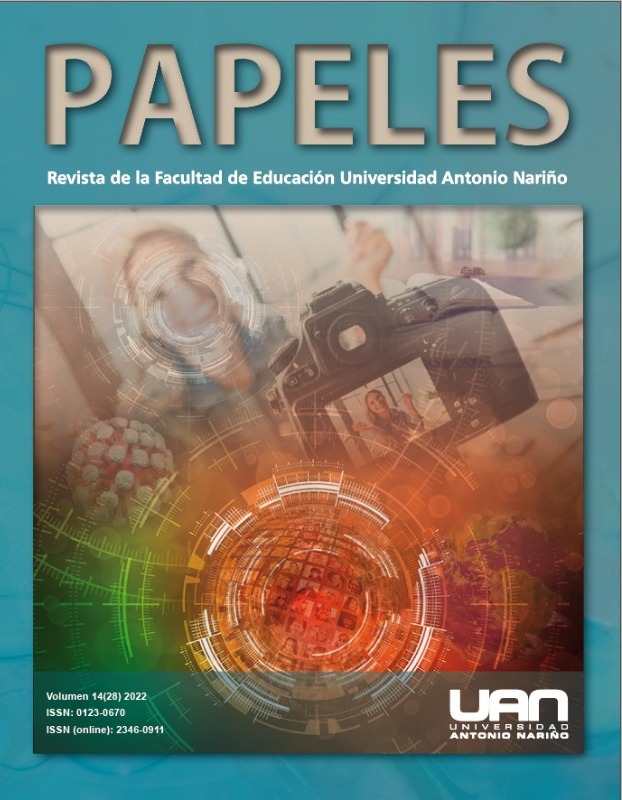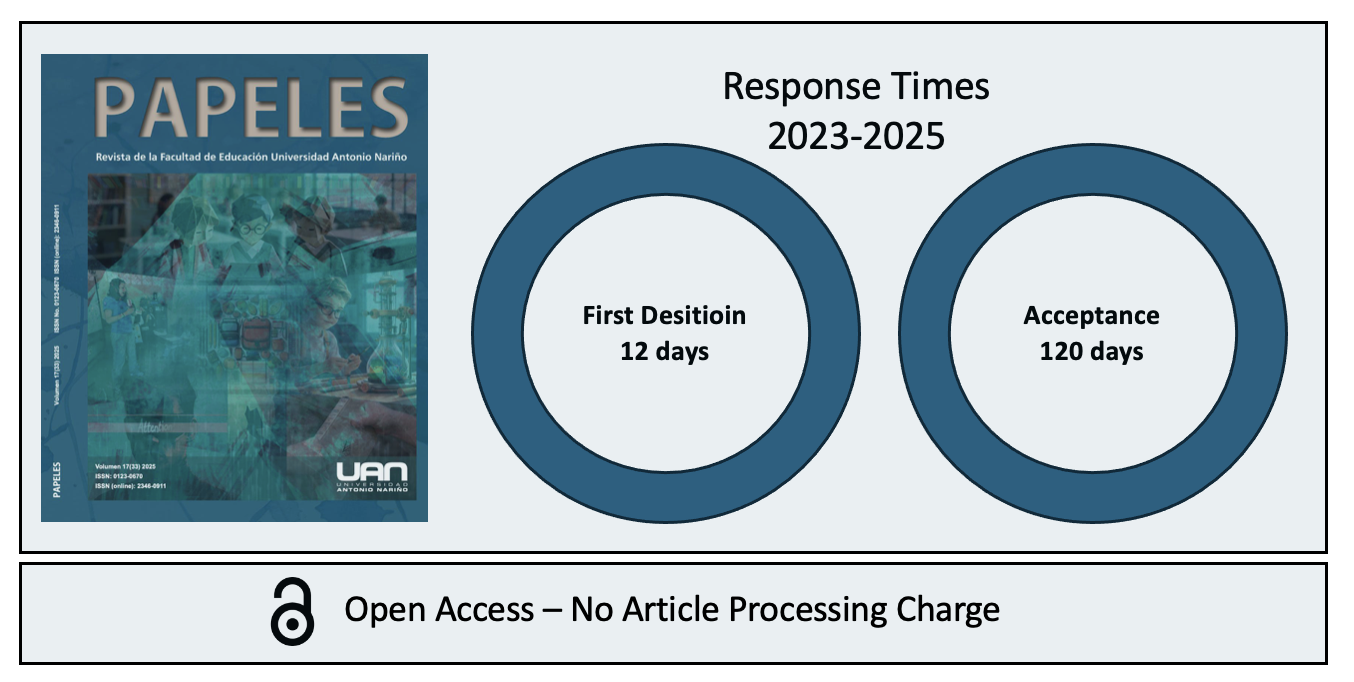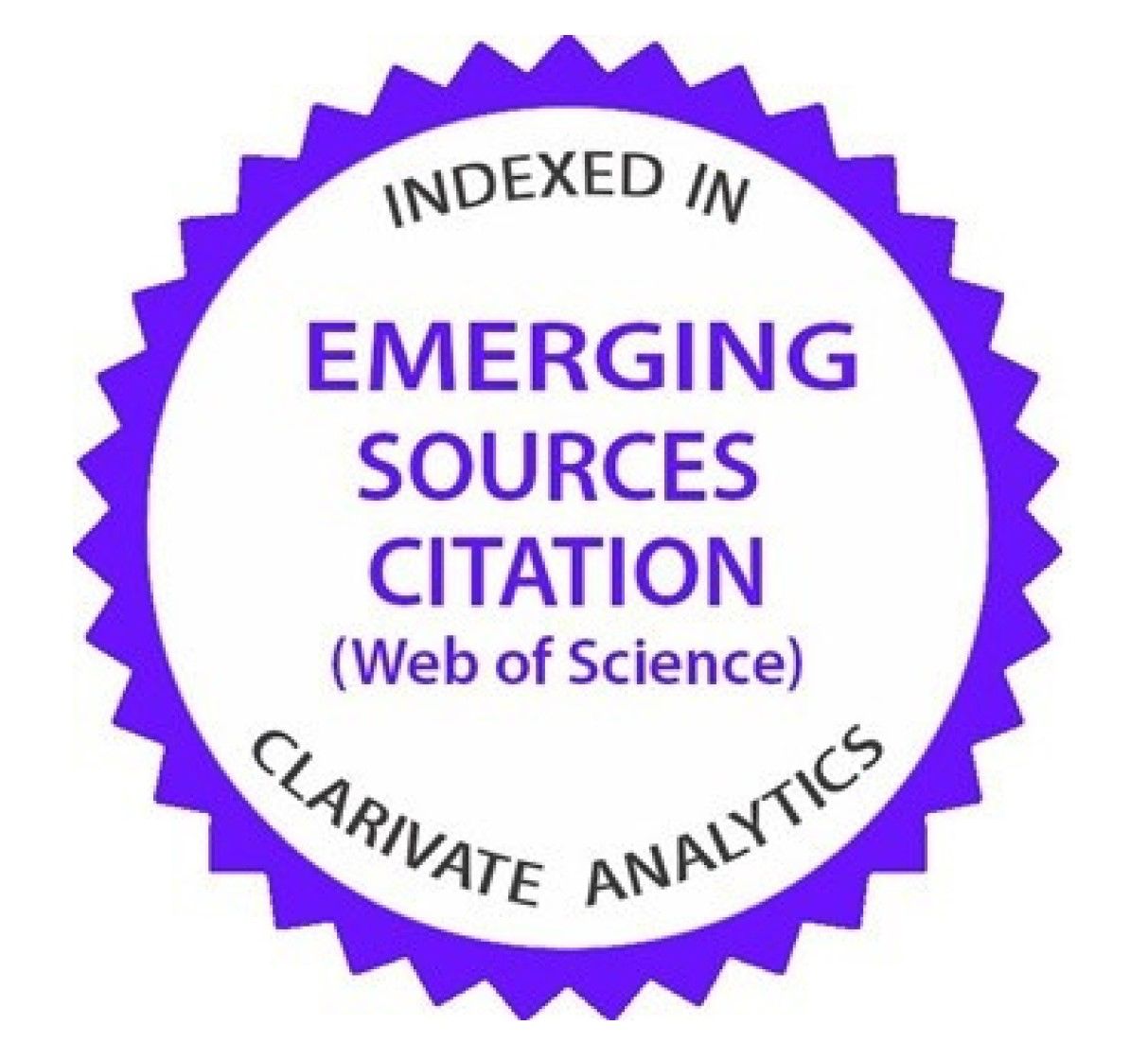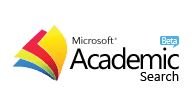A Characterization of Internet Math Memes
Una caracterización de los memes matemáticos de internet
DOI:
https://doi.org/10.54104/papeles.v14n28.1301Keywords:
Memes, math, internet, research, TICAbstract
Introduction: The main objective of the reported study is to characterize the content of existing mathematical memes on the internet and in some social networks. The problem related to the evolution of the concept “meme” and its implications in education mediated by technology is addressed. Methodology: The research was based on a qualitative exploratory study where content analysis was implemented as a method to analyze memes and generate themes that evidenced the characteristics of the selected memes. Results and discussion: The research provides a characterization of the content of mathematical memes, we recognize that their content addresses situations of daily life, cartoon scenes, movies that invite students to analyze analogies of the situation presented with the symbolic expressions typical of mathematics. Conclusions: The memes allow to identifying the necessary knowledge to study mathematical concepts, formulas, derivatives, integrals to mention a few and evidences the use of the mathematical symbols in contexts of daily life.
Downloads
References
Ávila, A. (coord.) (2018). Rutas de la educación matemática. Sociedad Mexicana de Investigación y Divulgación de la Educación Matemática.
Arango Pinto, L. G. (2015). Una aproximación al fenómeno de los memes en internet: Claves para su comprensión y su posible integración pedagógica. Comunicação Mídia e Consumo, 12(33), 109-131. https://doi.org/10.18568/cmc.v12i33.677
Bini, G. & Robutti, O. (2019). Meanings in mathematics: Using internet memes and augmented reality to promote mathematical discourse [ponencia]. Eleventh Congress of the European Society for Research in Mathematics Education, Utrecht, Netherlands. https://hal.archives-ouvertes.fr/hal-02422152/document
Beltrán Pellicer, P. (2016). Utilizando memes con tus alumnos. Números: Revista de Didáctica de la Matemáticas, 91, 129-134. https://zaguan.unizar.es/record/57751/files/texto_completo.pdf
Bernal, C. (2010). Metodología de la investigación: Administración, economía, humanidades y ciencias sociales (3.ª ed.). Pearson. https://abacoenred.com/wp-content/uploads/2019/02/El-proyecto-de-investigaci%C3%B3n-F.G.-Arias-2012-pdf.pdf
Canizzaro, S. (2016). Internet memes as internet signs: A semiotic view of digital culture. Sign Systems Studies, 44(4), 562-586.
Castro Nogueira, L. y Toro Ibáñez, M. A. (1999). Transmisión cultural y evolución: De los genes a los memes. Revista de libros, 29, 22-25.
Cervantes-Barraza, J., Valbuena, S. y Paternina, Y. (2019). Argumentos de estudiantes de primaria en el contexto del álgebra temprana. Educación y Humanismo, 21(37), 120-138. https://doi.org/10.17081/eduhum.21.37.3459
Cerda Etchepare, G., Pérez, C., Casas Bolaños, J. A. y Ortega Ruiz, R. (2016). Enseñanza y aprendizaje de las matemáticas: La necesidad de un análisis multidisciplinar. Psychology, Society & Education, 9(1), 1-10. https://dialnet.unirioja.es/servlet/articulo?codigo=6360203
Common Core State Standards Initiative. (2010). Common Core State Standards for Mathematics.
Darwin, C. (1876). On the origin of species by means of natural selection, or, The preservation of favoured races in the struggle for life. John Murray.
Dawkins, R. (1976). The selfish gene. Oxford University Press.
Dawkins, R. (1976). The selfish gene. Oxford University Press.
Dawkins, R. (1973). El gen egoísta: Las bases biológicas de nuestra conducta. Salvat.
D’Amore, B. (2015). Primeros elementos de la didáctica de las matemáticas. En L. A. Hernández Rebollar, J. A. Juárez López y J. Slisko Ignjatov (eds.), Tendencias en la educación matemática basada en la investigación (vol. 1, pp. 9-25). Benemérita Universidad Autónoma de Puebla. https://www.fcfm.buap.mx/assets/docs/publicaciones/TEMBI-V1.pdf#page=10
Gonçalves, P. G. F. (2016). Memes e educação matemática: Um olhar para as redes sociais digitais [ponencia]. Educação Matemática na Contemporaneidade: Desafios e posibilidades, São Paulo, Brasil. http://www.sbem.com.br/enem2016/anais/pdf/5825_2391_ID.pdf
Fernández Chaves, F. (2002). El análisis de contenido como ayuda metodológica para la investigación. Revista de Ciencias Sociales, 2(96), 35-53. https://www.redalyc.org/pdf/153/15309604.pdf
Guadarrama Herrera, A., Mendoza Guadarrama, C., Díaz Silva, J. y Becerril Morales, F. (2018). El uso de los memes como estrategia didáctica aplicada en las matemáticas [ponencia]. X Foro Educadores para la Era Digital. https://encuentros.virtualeduca.red/storage/ponencias/bahia2018/97N75Ad7WfPEABQFhrDNPdFOWuAwSE5dDVJGODTH.pdf
García Huerta, D. (2014). Las imágenes macro y los memes de internet: Posibilidades de estudio desde las teorías de la comunicación. PAAKAT: Revista de Tecnología y Sociedad, 6(4), 1-8. http://www.udgvirtual.udg.mx/paakat/index.php/paakat/article/view/217/316
Kilpatrick, J., Hoyles, C. & Skovsmose, O. (2005). Meanings of Meaning of Mathematics. En J. Kilpatrick, C. Hoyles, O. Skovsmose & P. Valero (eds.), Meaning in mathematics education (pp. 9-16). Springer.
Knobel, M. & Lankshear, C. (2005). Online memes, affinities, and cultural production. En M. Knobel & C. Lankshear (eds.), A new literacies sampler (pp. 199-229). Peter Lang Publishing.
Mayring, P. (2015). Qualitative content analysis: Theoretical background and procedures. En A. Bikner-Ahsbahs, C. Knipping & N. Presmeg (eds.), Approaches to qualitative research in mathematics education: Examples of methodology and methods (pp. 365-385). Springer. https://doi.org/10. 1007/978-94-017-9181-6_4
Ministerio de Educación Nacional. (2006). Estándares básicos de competencias en lenguaje, matemáticas, ciencias y ciudadanas. https://www.mineducacion.gov.co/1621/articles-340021_recurso_1.pdf
National Council of Teachers of Mathematics. (2000). Principles and standards for school mathematics.
O’Brien, J., Dassios, I. K. & Gleeson, J. P. (2019). Spreading of memes on multiplex networks. New Journal of Physics, 21(2), 025001. https://iopscience.iop.org/article/10.1088/1367-2630/ab05ef/pdf
Osterroth, A. (2017). Semiotics of internet memes. https://www.researchgate.net/publication/319236833_Semiotics_of_Internet_Memes?channel=doi&linkId=599d367ca6fdcc50034d1a5c&showFulltext=true
Peirce, M. (2001). Concept of the sign. En P. Cobley (ed.), The Routledge companion to semiotics and linguistics. Routledge.
Rodríguez-Nieto, C., Nuñez-Gutiérrez, K., Rosa, M. y Clark-Orey, D. (2022). Conexiones etnomatemáticas y etnomodelación en la elaboración de trompos y tacos de carne: Más allá de un antojito mexicano. Revemov, 4, 1-34. https://doi.org/10.33532/revemop.e202202
Santibáñez, C. (2001). Teoría social y memes. A Parte Rei, 18. http://serbal.pntic.mec.es/~cmunoz11/memes.pdf
Vélez, J. C. y Fajardo Chica, D. (2009). Memética e imitación: Posibilidades desde un enfoque cognitivista. Ludus Vitalis, 17(31), 87-101. http://www.ludus-vitalis.org/ojs/index.php/ludus/article/view/276
Downloads
Published
-
Abstract635
-
PDF (Español)918
How to Cite
Issue
Section
Categories
License
Copyright (c) 2022 Jonathan Alberto Cervantes Barraza, Jhonatan Andrés Arenas-Peñaloza

This work is licensed under a Creative Commons Attribution-NoDerivatives 4.0 International License.






